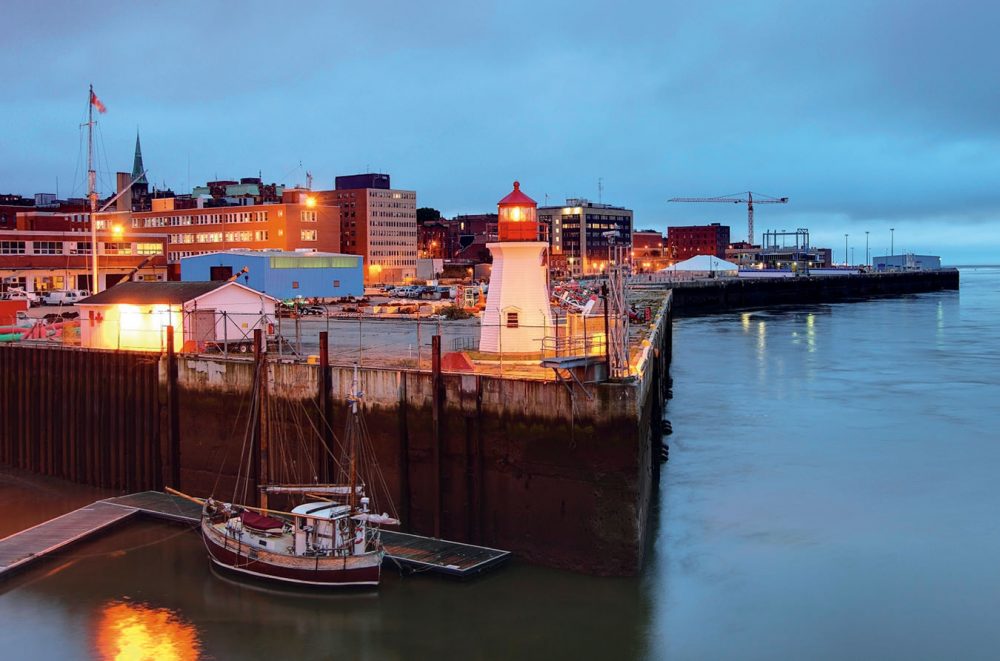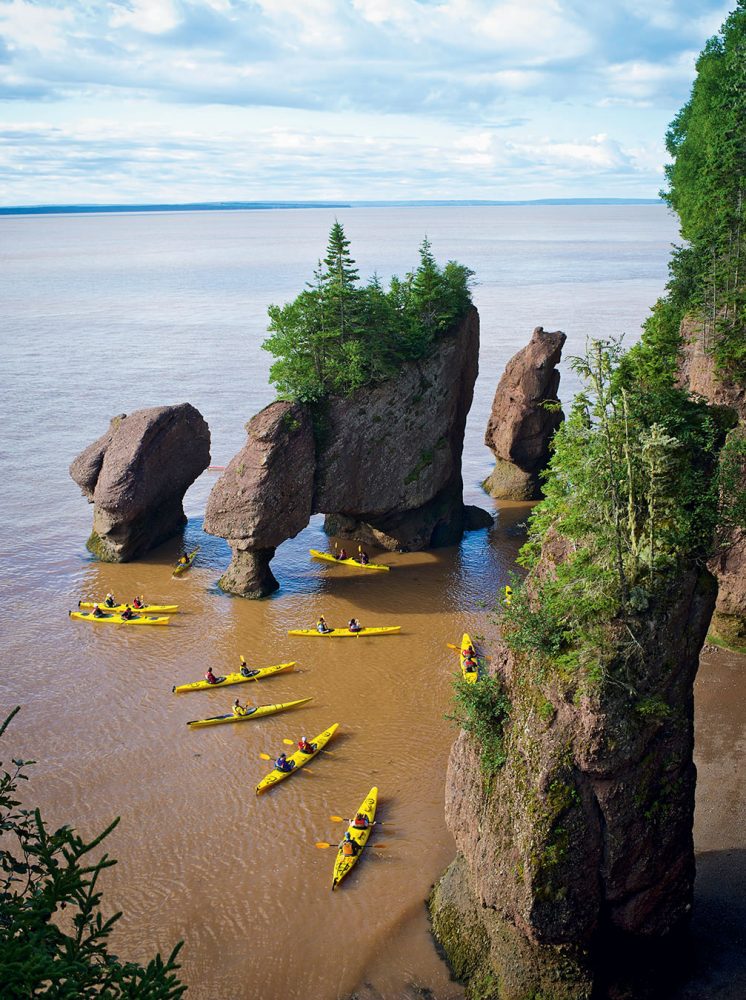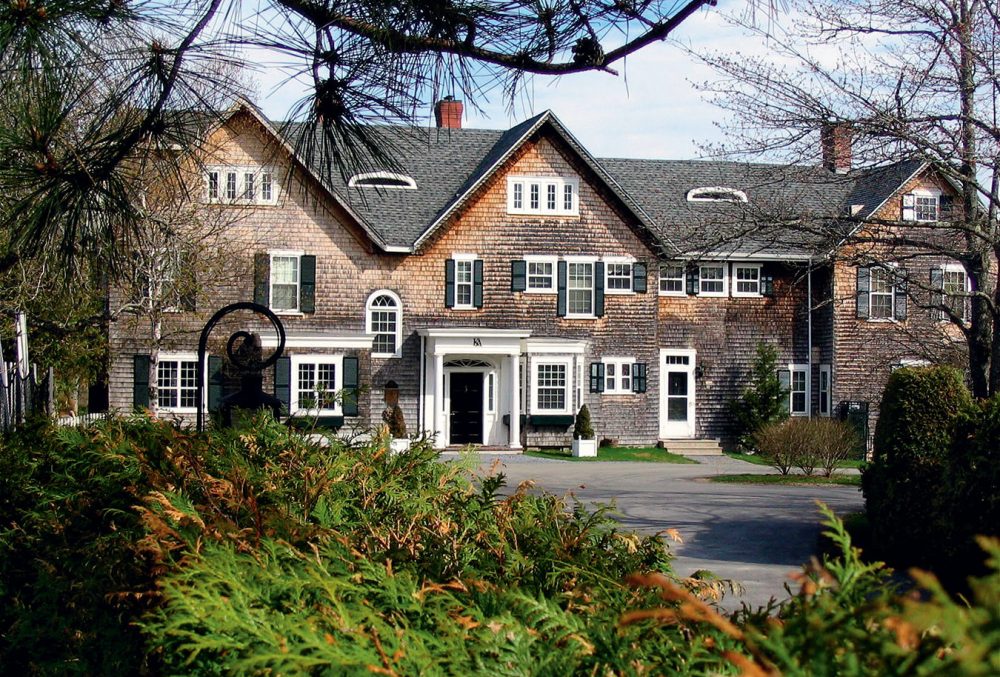The Bay of Fundy fills the crook between New Brunswick and Nova Scotia. It is shaped like a funnel; the oscillating tides entering the bay are forced into a narrower channel, and the water has nowhere to go but up, up, up. One hundred billion tonnes of sea water flow in and out of the bay twice daily—more than the combined flow of all the world’s freshwater rivers.
Rent a car for a week and do New Brunswick’s Fundy Coastal Drive. First stop, Moncton, is home to a very peculiar attraction indeed. At the mysterious Magnetic Hill, you’ll see locals and tourists alike sitting in bewilderment as their vehicles—in neutral—roll uphill. Turns out this oddity has baffled locals since the early 1800s, when barrels would run up on the heels of horses, startling the poor animals. It’s worth partaking in this bizarre ritual if only to be pleasantly perplexed by this optical illusion.
After you manage to finally pull yourself away and continue on, you’ll arrive at Hopewell Rocks, which is one of the most spectacular places to experience the Bay of Fundy in all of New Brunswick. Wander among the rock formations at low tide so you can explore hidden passages. Friendly iPad-toting interpreters walk the beach, showing guests historic photos and videos of the rocks for an enhanced educational experience. Of course, your visit to Hopewell Rocks isn’t quite complete until you return at high tide to venture around the formations by kayak.
At the mysterious Magnetic Hill, you’ll see locals and tourists alike sitting in bewilderment as their vehicles—in neutral—roll uphill.
If you time your visit in mid-July, you can witness 2.5 million shorebirds, including 75 per cent of the world’s semipalmated sandpipers, check in to one of several sites along the Bay of Fundy—their only stopover on a 4,000-kilometre migration to Guyana and Brazil. They’ll stay just long enough to double their weight eating mud shrimp, after which they’re gone as quick as they came.
From here, wend your way to Canada’s oldest incorporated city, Saint John. And whatever you do, do not accidentally tack on an s at the end. (When Prince Charles visited the province with Lady Diana in 1983, he addressed the crowd incorrectly and was met with an audible groan. Needless to say, he did not make that mistake again.)
When in Saint John, seek out local historian David Goss, who leads the most riveting walking tours around the city. He’ll introduce you to a colourful cast of characters, and regale you with intriguing and delightful anecdotes about the city in its youth. The great fire of 1877 burned for nine hours and destroyed about 40 per cent of the city (and resulted, unsurprisingly, in a ban on wooden buildings). An informal competition ensued as people began to rebuild their homes. Neighbours tried to one-up each other, adding more features until they were satisfied that their domain was just a touch more impressive than the next.
Saint John was also Canada’s leading shipbuilding centre from 1830 until 1880, and the winter port of preference from 1890 until 1960. The city supplied not only the boat builders but also the crews for ships that sailed around the world and back. Mariners would often bring curios home with them, and some of these artifacts are now on display at the New Brunswick Museum, such as a Chinese porcelain bowl from the Qianlong reign (1736–1796), a wood carving from the Cook Islands. Other treasures include two Easter Island tapa figures (only seven are known throughout the world), and a fossilized insect wing found in the province and specifically mentioned in Darwin’s Descent of Man (1871).
Make St. Andrews by-the-Sea your final stop and stay at Relais & Châteaux property Kingsbrae Arms, a turn-of-the-century home that served as the summer estate for a number of wealthy families, including the aide-de-camp to the Duke and Duchess of Windsor. It also houses sundry artifacts, both old relics that once belonged to previous occupants and objets d’art from owner Harry Chancey’s collection. He explains, “We have treasures and we have fakes, but we’ll never tell.”
Wander among Hopewell Rocks at low tide and explore hidden passages. Of course, your visit isn’t quite complete until you return at high tide to venture around the formations by kayak.
Kingsbrae Arms chef Guillaume Delauné, who has worked at a number of Michelin-starred restaurants in the south of France, prepares local bounty with an Asian flair: New Brunswick Beausoleil oysters with Granny Smith apples, pomegranate, and arugula micro greens; Bay of Fundy yellowfin tuna tataki with crispy Asian poêlé; and lobster consommé with brunoise Ronde de Nice zucchini and roasted shiitake mushrooms, ginger, and cilantro.
Adjacent to the house is the 27-acre Kingsbrae Garden, which backs onto an old-growth Acadian forest, untouched since time immemorial. It’s old, but young perhaps compared to another ancient treasure: the Wollemi pine—a 200-million-year-old tree species. It was presumed extinct until a bushwalker discovered a small grove of them in Australia’s Wollemi National Park in 1994. This Jurassic-age treasure was acquired in 2006 by a determined garden board member who placed bids on every single lot.
For a light meal or midday snack, try the small plates at the Olive Bar at Treadwell Inn, which include watermelon gazpacho and halibut ceviche, and house-smoked salmon with beets, pear, and arugula drizzled with a pecan praline balsamic vinegar. Sit out on the patio and observe groups of whale watchers come and go at the docks.
Sir William Van Horne, the man who connected the country with the Canadian Pacific Railway, was so charmed by sleepy St. Andrews that he built his summer estate on Minister’s Island. It’s worth a day trip, as the journey in itself is a bit of a novelty. A small strip of land, known as Bar Road, is revealed when the tides peel out, making it a short drive up to the island. But beware—it’s the ocean floor after all, not a paved road. Every year, HMS Towing rescues a surprising number of vehicles full of ambitious drivers from the pothole or ditch they blundered into. Getting stuck and having to wait anxiously for rescue before the tide washes in is one way to experience nature’s swift hand, but certainly not the most preferable.
You’ll see there’s a particular charm felt in New Brunswick that goes beyond covered bridges, lighthouses, and eating lobster every day. (Children of fishermen, who had the enviable occasion of having lobster rolls daily for lunch would trade them for good ol’ PB&J sandwiches.) Visit for an outdoor adventure, a piece of Canada’s history, or go simply to watch the tides turn.











